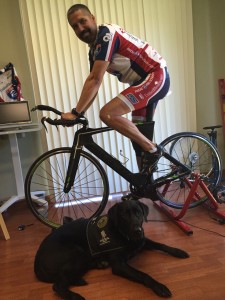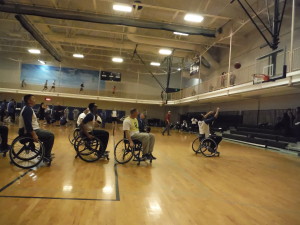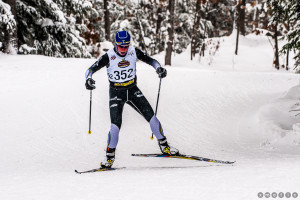Better Understanding the Mystery of the Injured Runner, Part II
This series is based on the Science of Running Symposium I recently attended in San Francisco. To read part I, click here.
Every running magazine contains at least one article on running injuries and prevention. And a website search on these topics will result in a life-time of reading. Frustrated by the apparent void of a science-substantiated, systematic approach to help the injured runner return to sport and the uninjured runner avoid injury, I was determined to find a research-based, clinic tested program that dug in to the underlying, root causes driving injuries.
As a result of this search, I found and attended a six month fellowship with Dr. Chris Powers, at his USC-affiliated Movement Performance Institute, and attend update courses with him, including this year’s Science of Running Symposium.
Dr. Powers opened the symposium by posing the question, Why are injuries so prevalent among runners? The answer may start with the sheer number of runners.
Why do so many Americans, approximately 36 million, chose running as their activity of choice?
- Easily accessible
- Low cost
- Time efficient workout
Injury rates, amongst the running populatiobn, range anywhere from 20-80%. And of those injuries, 50% occur at the knee.
What are some key factors that contribute to a high incidence of running injuries?
- Frequency of loading
- Magnitude of loading
- Ground reaction forces two to three times body weight
- Abnormal mechanics
With these factors in mind, then consider a majority of the running population turns to running to lose weight. So to piece the scenario together, we have an overweight person, who lacks muscular strength, stability, mobility and motor skills to effectively dampen and direct forces (two to three times body weight) that impact their joints. In many cases too, this population lacks a systematic progression to their training volume.
Dr. Powers then presented the concept of Envelope of Function, developed by Dr. Dye. The Envelope of Function states
- There is an area called homeostasis where the runner operates optimally
- Factors affecting the width of the homeostasis window include
- Magnitude of loading
- Frequency of loading
- Abnormal mechanics
- Increases in one or all of these factors, narrows the window of homeostasis, pushing the runner toward overuse injuries
Now let’s take the above factors and consider, for example, the demands on runners training for a marathon. These runners will foot strike over one million times while training for the marathon, and strike 26,000/mile/foot during the marathon. So how can we stay in that optimally operating zone of homeostasis?
Consistently and Purposefully Practiced Stability, Activation and Mobility Program
When we effectively train the stabilizers to kick in before the prime movers fire, the stabilizers set a foundation so the prime movers can direct the force in the intended direction. Visualize a canon floating in a canoe and firing its shots – this is analogous to a prime mover firing without stabilizers in place. Get the picture?
Hip activation, is the first step to develop brain to glute communication and the ability to properly fire muscles during movement. Proper recruitment of glutes, during running, allows safe and effective deceleration and shock absorption of those pesky ground reaction forces, through more reliance on the glutes and less over-reliance on the quads and hamstrings.
Finally a practice of global mobility with respect to joints, muscular length and soft tissues helps to facilitate proper neuromuscular firing/recruitment and structural alignment.

Less is More Training with Quality Taking Precedence of Quantity
Those years of Western States runners training, for example, by slogging away, eight hour day after hour day are gone. This training led to mental and physical break-down and slow, mechanically inefficient running.
The training goal is to get fit to run efficiently, not run to get fit. And this requires variety based on quality work and quality rest. The training week consistently includes intervals, speed and power, endurance, rest and non-aerobic activation, stability and mobility. It is the consistent practice of all these parts that provides injury prevention and performance.
One of the main goals of the interval work, shorter speed and longer tempo, is to improve running specific strength, power and economy of movement. This interval work assumes the supporting activation, stability and mobility program is in place. The goal is not how hard we can go at the expense of controlled movement, but how fast can we go with the objective of holding good mechanics, and fluidly moving with control and purpose.
Training programs based solely on slow miles, allow you to go long and slow. But endurance events are a game of efficiency, quality structured workouts develop specific running strength and economy of movement, reduce injury potential and improve performance.
Get the most out of every workout, by understanding why you are doing it. Be mentally and physically engaged in your running vs slogging away more and more mindless miles.
Stay tuned for part III, understanding normal running mechanics.





